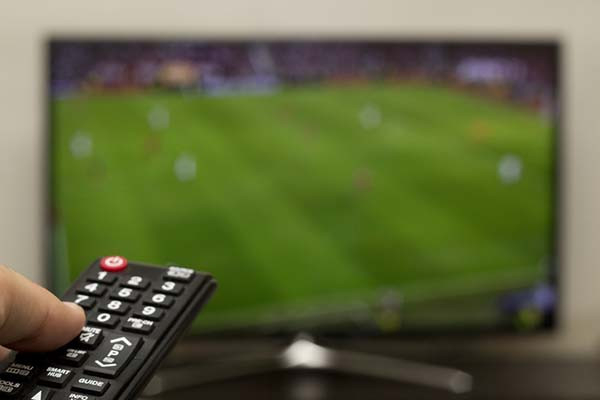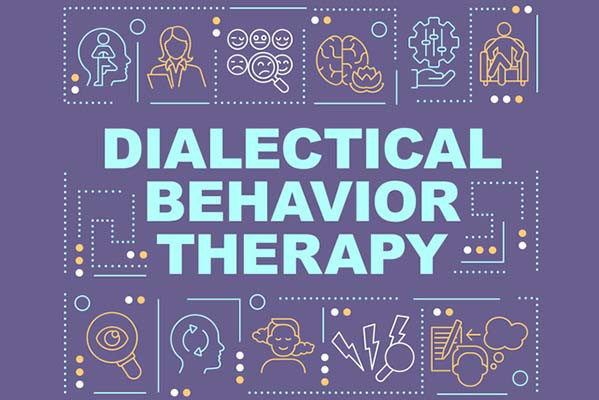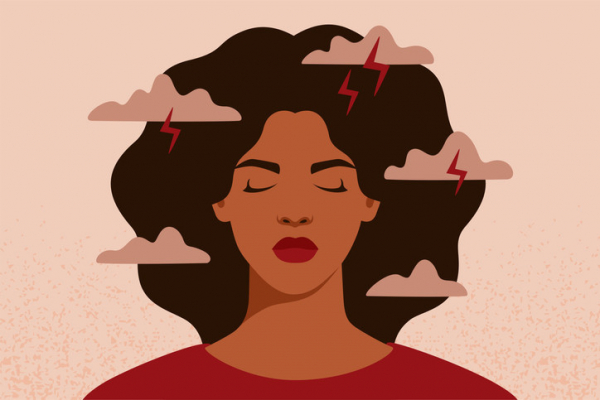
Can watching sports be bad for your health?

As the new year rolls on, sports fans rejoice! You’ve had the excitement of the college football bowl games and the national championship game, the NFL playoff games are winnowing teams down to the Super Bowl contestants, and basketball and hockey seasons are in full swing. Spring training for the upcoming Major League Baseball season is around the corner.
But hold these thoughts a moment. Watching sports — not just playing them — can be hazardous to your health. I’ve seen it firsthand while working in a walk-in clinic near Fenway Park, where people would show up bleeding from cuts that needed stitches (from trips and falls at the stadium), broken bones (from trying to catch a foul ball or an altercation with another fan), and dehydration.
Most of these injuries weren’t life-threatening. But there’s evidence that the health impact of sports spectatorship can be far more serious for some of us — and, perhaps, underappreciated.
What are the health risks of watching live sports?
When you’re watching games in person, some risks are related to the weather and other fans. For example:
- Watching a baseball game in the summer for hours may lead to heat stroke or dehydration.
- Live winter football games may raise the risk of hypothermia, frostbite, or other cold-related problems.
- Stampedes, riots, and brawls between rival fans watching soccer matches are not rare and may actually be on the rise.
- And, as mentioned, spectators of live sports can be injured by balls hit into the stands or other flying objects such as bats, pucks, or golf balls.
How could watching sports on TV boost health risks?
Doctors and nurses often describe how quiet things get in the emergency room during a World Series game or the Super Bowl. But once the game ends, it tends to get much busier. One theory is that people with chest pain, trouble breathing, or other symptoms of a potentially serious problem who ordinarily would have reported to the emergency room right away may delay seeking care until after the game.
Of course, there’s another possibility: the game itself — especially if a game is close and particularly exciting — might cause enough stress on the body that heart attacks, strokes, or other dangerous conditions develop.
Research supporting the idea that watching sports can negatively affect your health includes:
- Older studies have linked hospital admissions for heart failure and cardiac arrest with watching sporting events.
- A 2017 study found that spectators of Montreal Canadiens hockey games experienced a doubling of their heart rate during games. The effect was more pronounced for live games than televised games, but even the latter experience led to faster heart rates similar to the effect of moderate exercise.
- A 2022 study found that hospital admissions for cardiovascular problems jumped 15% during and just after World Cup soccer games.
Together, these studies suggest that watching sports can be stressful enough to trigger dangerous cardiovascular events.
It’s worth emphasizing that most people watching sports enjoy it and do not experience any health problems related to the game. But these studies suggest that spectating may carry some small risk, similar to what might accompany moderate or vigorous exercise. This may be most relevant for people who are older or who already have cardiovascular disease.
What’s a sports fan to do?
One common recommendation is to remember that it’s only a game. Of course, if you care a lot about sports or a particular team, that advice is unlikely to help. A second is to get regular exercise. Staying physically active strengthens the heart and lowers blood pressure, which could help ward off some of the health risks described above.
Five additional game-day precautions are:
- Avoid overeating, especially salty junk food. For some, overindulging in food, drink, and salt can stress the heart or trigger heart failure.
- Be prepared for the weather. Check the forecast. If you’re planning to watch a game in the cold, dress in layers, use hand warmers, and drink warm fluids. If you’re going to be out in the sun, use sunscreen liberally, wear a hat, and hydrate well.
- If you have cardiovascular disease, don’t forget to take your medications, especially if there’s a big game coming up. And if you develop worrisome symptoms, such as chest pain or trouble breathing, seek medical attention right away. Don’t wait till the game ends!
- Stay hydrated and moderate your alcohol intake. Stay well-hydrated by drinking water, especially if you’re out in the heat for hours. Although beer is a liquid, it’s also a diuretic, meaning it can make you urinate more and lose more fluids than other beverages.
- Stay alert at live events. Give yourself a fighting chance of getting out of the way of a line-drive foul ball or an errant bat that’s slipped out of the batter’s hands during a swing.
The bottom line
I can attest to many upsides of watching sports: the excitement of competition and the bonding and camaraderie with likeminded friends, family, and other fans. And perhaps watching sports might improve your health if sports spectatorship sparks sports participation.
While watching sports has been linked to certain health risks, the overall risk is likely low for most people. And you can take steps to reduce this. The health risks of spectatorship only rarely require giving up watching a favorite team. So, put on your team jersey, cheer your team on to victory, and stay healthy while you’re at it. Oh, and watch out for outraged fans or flying bats.
About the Author

Robert H. Shmerling, MD, Senior Faculty Editor, Harvard Health Publishing; Editorial Advisory Board Member, Harvard Health Publishing
Dr. Robert H. Shmerling is the former clinical chief of the division of rheumatology at Beth Israel Deaconess Medical Center (BIDMC), and is a current member of the corresponding faculty in medicine at Harvard Medical School. … See Full Bio View all posts by Robert H. Shmerling, MD

Dialectical behavior therapy: What is it and who can it help?

Feeling sad, anxious, or angry at times is a normal part of the human experience. But do you — or someone you’re close to — seem to experience these and similar emotions more quickly, more frequently, and more intensely than most people?
This problem, known as emotional dysregulation, is a hallmark of many mental health conditions, but especially borderline personality disorder. The most effective treatment for borderline personality disorder is dialectical behavior therapy (DBT), which has also been shown to help people experiencing other issues. What is DBT, who might benefit from this form of therapy, and how is it applied?
What is DBT?
DBT focuses on teaching people skills to manage intense emotions, cope with challenging situations, and improve their relationships. It encourages people to learn and use mindfulness training in practical ways.
During individual and group sessions, therapists encourage a nonjudgmental attitude and emphasize acceptance, compassion, and other aspects of mindfulness.
Who may benefit from DBT?
DBT has a proven track record for addressing the most debilitating symptoms of borderline personality disorder: self-injury and suicide threats or attempts. It is now also used to treat depression, post-traumatic stress disorder, eating disorders, and substance use disorders.
In fact, the cornerstone of DBT — the skills training — can help anyone navigate emotionally charged situations with more ease.
How can mindfulness change how people experience strong emotions?
Many people in therapy have very strong emotions that lead to negative thoughts, says Dr. Blaise Aguirre, a psychiatrist who founded the 3 East Dialectic Behavior Therapy Continuum at Harvard-affiliated McLean Hospital. “They say things like, ‘I’m stupid,’ or ‘I can’t control my anger,’ or ‘No one will ever love me,'” he says.
The mindfulness aspect of DBT teaches people to pay careful attention to the nature, quality, and volume of their thoughts. The idea is to observe these thoughts as separate from yourself without identifying with their meaning. This is the first step to addressing the impact of those thoughts, Dr. Aguirre explains.
How does DBT differ from cognitive behavioral therapy?
DBT is derived from cognitive behavioral therapy (CBT). CBT assumes that certain negative thoughts (cognitions) are distortions, and if you learn how to swap those distorted thoughts with more productive ones, you’ll be less depressed or anxious.
“But for someone with very deep emotions and convictions, telling them that their thoughts and feelings are somehow ‘wrong’ feels very invalidating,” says Dr. Aguirre. A DBT-trained therapist would instead acknowledge that the person’s thoughts make sense, given who they are and their experiences. This practice, known as validation, is a central tenet of DBT. It’s key to know that you can validate a person’s thoughts even if you don’t agree with them.
That concept touches on the core of DBT — the dialectical part. It refers to the idea that two opposite things can be true at the same time. Rather than viewing things in extremes of black and white, DBT encourages people to recognize there’s more than one way to view a situation and to try to “walk the middle path.” A classic DBT mantra is “I’m doing the best that I can in this moment, and I want to and can do better.”
What other skills does DBT rely on?
In addition to mindfulness, DBT teaches three other main skills:
- Distress tolerance is the ability to manage emotional distress in the moment, using techniques such as distraction.
- Emotion regulation involves recognizing, accepting, and managing intense emotions.
- Interpersonal effectiveness focuses on improving communication with other people to strengthen relationships and improve your self-esteem.
What does DBT entail?
Ideally, DBT includes one-on-one sessions with a therapist (who is also available between sessions for phone or text coaching). The one-on-one sessions are combined with weekly group sessions led by a therapist who teaches the specific, interconnected skills and gives homework that helps to reinforce the skills. Participants are encouraged to keep a daily diary to track their emotions, behaviors, reactions, and examples of how they’re practicing their skills.
DBT has been shown to be effective for people ranging from adolescents to older adults with a range of mental health conditions. It appears to be especially useful for adolescents, perhaps for the same reason that it’s easier to learn a language or how to play an instrument when you’re younger rather than older, says Dr. Aguirre.
Are there different options for gaining access to DBT?
Accessing the full DBT experience can be challenging for many people. The skills groups meet for one to two hours weekly for six to 12 months, which is in addition to weekly, hour-long sessions with an individual therapist. Individual therapy may cost as much as $250 to $300 per hour, and the groups are often around $100 per hour. Not all DBT providers accept insurance.
“We’re starting to recognize that the majority of people can improve just doing the skills groups and don’t need the full DBT,” says Dr. Aguirre.
But for teens who are suicidal or harming themselves, intensive DBT can help keep them out of the hospital and potentially save their lives. “If your child had cancer, you wouldn’t think twice about taking them in for chemotherapy infusions twice a week,” says Dr. Aguirre.
Another problem is that there aren’t many DBT-trained providers in less populated parts of the country. Online DBT therapy may be an option, although its effectiveness hasn’t been studied.
Is there one simple DBT tool I can try?
If a family member struggles with very strong emotions, Dr. Aguirre offers this mini-DBT lesson about validation. Situations that trigger intense emotions are often rooted in a perception of abandonment, neglect, or rejection, he says. For example, if a person believes that someone at work is avoiding them, or a romantic partner doesn’t show up on time, it can trigger a rapid rise in emotional distress.
Here’s what to avoid saying:
“You have to calm down.”
“You are making a big deal over nothing.”
“When I am upset, I make myself a nice cup of tea and that should help you, too.”
Here’s what you can say instead:
“You seem really upset. Do you want to talk about it, or do you want some time by yourself?’
“You seem very sad. I am around if you want to talk.”
“Is there anything that I can do to help?”
“These types of statements validate the person’s feelings and convey that you’re listening and open to helping, if that’s what they want,” says Dr. Aguirre.
About the Author

Julie Corliss, Executive Editor, Harvard Heart Letter
Julie Corliss is the executive editor of the Harvard Heart Letter. Before working at Harvard, she was a medical writer and editor at HealthNews, a consumer newsletter affiliated with The New England Journal of Medicine. She … See Full Bio View all posts by Julie Corliss
About the Reviewer

Howard E. LeWine, MD, Chief Medical Editor, Harvard Health Publishing
Dr. Howard LeWine is a practicing internist at Brigham and Women’s Hospital in Boston, Chief Medical Editor at Harvard Health Publishing, and editor in chief of Harvard Men’s Health Watch. See Full Bio View all posts by Howard E. LeWine, MD

What is a tongue-tie? What parents need to know

The tongue is secured to the front of the mouth partly by a band of tissue called the lingual frenulum. If the frenulum is short, it can restrict the movement of the tongue. This is commonly called a tongue-tie.
Children with a tongue-tie can’t stick their tongue out past their lower lip, or touch their tongue to the top of their upper teeth when their mouth is open. When they stick out their tongue, it looks notched or heart-shaped. Since babies don’t routinely stick out their tongues, a baby’s tongue may be tied if you can’t get a finger underneath the tongue.
How common are tongue-ties?
Tongue-ties are common. It’s hard to say exactly how common, as people define this condition differently. About 8% of babies under age one may have at least a mild tongue-tie.
Is it a problem if the tongue is tied?
This is really important: tongue-ties are not necessarily a problem. Many babies, children, and adults have tongue-ties that cause them no difficulties whatsoever.
There are two main ways that tongue-ties can cause problems:
- They can cause problems with breastfeeding by making it hard for some babies to latch on well to the mother’s nipple. This causes difficulty with feeding for the baby and sore nipples for the mother. It doesn’t happen to all babies with a tongue-tie; many of them can breastfeed successfully. Tongue-ties are not to blame for gassiness or fussiness in a breastfed baby who is gaining weight well. Babies with tongue-ties do not have problems with bottle-feeding.
- They can cause problems with speech. Some children with tongue-ties may have difficulty pronouncing certain sounds, such as t, d, z, s, th, n, and l. Tongue-ties do not cause speech delay.
What should you do if think your baby or child has a tongue-tie?
If you think that your newborn is not latching well because of a tongue-tie, talk to your doctor. There are many, many reasons why a baby might not latch onto the breast well. Your doctor should take a careful history of what has been going on, and do a careful examination of your baby to better understand the situation.
You should also have a visit with a lactation specialist to get help with breastfeeding — both because there are lots of reasons why babies have trouble with latching on, and also because many babies with a tongue-tie can nurse successfully with the right techniques and support.
Talk to your doctor if you think that a tongue-tie could be causing problems with how your child pronounces words. Many children just take some time to learn to pronounce certain sounds. It is also a good idea to have an evaluation by a speech therapist before concluding that a tongue-tie is the problem.
What can be done about a tongue-tie?
When necessary, a doctor can release a tongue-tie using a procedure called a frenotomy. A frenotomy can be done by simply snipping the frenulum, or it can be done with a laser.
However, nothing should be done about a tongue-tie that isn’t causing problems. While a frenotomy is a relatively minor procedure, complications such as bleeding, infection, or feeding difficulty sometimes occur. So it’s never a good idea to do it just to prevent problems in the future. The procedure should only be considered if the tongue-tie is clearly causing trouble.
It’s also important to know that clipping a tongue-tie doesn’t always solve the problem, especially with breastfeeding. Studies do not show a clear benefit for all babies or mothers. That’s why it’s important to work with a lactation expert before even considering a frenotomy.
If a newborn with a tongue-tie isn’t latching well despite strong support from a lactation expert, then a frenotomy should be considered, especially if the baby is not gaining weight. If it is done, it should be done early on and by someone with training and experience in the procedure.
What else should parents know about tongue-tie procedures?
Despite the fact that the evidence for the benefits of frenotomy is murky, many providers are quick to recommend them. If one is being recommended for your child, ask questions:
- Make sure you know exactly why it is being recommended.
- Ask whether there are any other options, including waiting.
- Talk to other health care providers on your child’s care team, or get a second opinion.
About the Author

Claire McCarthy, MD, Senior Faculty Editor, Harvard Health Publishing
Claire McCarthy, MD, is a primary care pediatrician at Boston Children’s Hospital, and an assistant professor of pediatrics at Harvard Medical School. In addition to being a senior faculty editor for Harvard Health Publishing, Dr. McCarthy … See Full Bio View all posts by Claire McCarthy, MD

Which migraine medications are most helpful?

If you suffer from the throbbing, intense pain set off by migraine headaches, you may well wonder which medicines are most likely to offer relief. A recent study suggests a class of drugs called triptans are the most helpful option, with one particular drug rising to the top.
The study drew on real-world data gleaned from more than three million entries on My Migraine Buddy, a free smartphone app. The app lets users track their migraine attacks and rate the helpfulness of any medications they take.
Dr. Elizabeth Loder, professor of neurology at Harvard Medical School and chief of the Division of Headache at Brigham and Women’s Hospital, helped break down what the researchers looked at and learned that could benefit anyone with migraines.
What did the migraine study look at?
Published in the journal Neurology, the study included self-reported data from about 278,000 people (mostly women) over a six-year period that ended in July 2020. Using the app, participants rated migraine treatments they used as “helpful,” “somewhat helpful,” or “unhelpful.”
The researchers looked at 25 medications from seven drug classes to see which were most helpful for easing migraines. After triptans, the next most helpful drug classes were ergots such as dihydroergotamine (Migranal, Trudhesa) and anti-emetics such as promethazine (Phenergan). The latter help ease nausea, another common migraine symptom.
“I’m always happy to see studies conducted in a real-world setting, and this one is very clever,” says Dr. Loder. The results validate current guideline recommendations for treating migraines, which rank triptans as a first-line choice. “If you had asked me to sit down and make a list of the most helpful migraine medications, it would be very similar to what this study found,” she says.
What else did the study show about migraine pain relievers?
Ibuprofen, an over-the-counter pain reliever sold as Advil and Motrin, was the most frequently used medication in the study. But participants rated it “helpful” only 42% of the time. Only acetaminophen (Tylenol) was less helpful, helping just 37% of the time. A common combination medication containing aspirin, acetaminophen, and caffeine (sold under the brand name Excedrin) worked only slightly better than ibuprofen, or about half the time.
When researchers compared helpfulness of other drugs to ibuprofen, they found:
- Triptans scored five to six times more helpful than ibuprofen. The highest ranked drug, eletriptan, helped 78% of the time. Other triptans, including zolmitriptan (Zomig) and sumatriptan (Imitrex), were helpful 74% and 72% of the time, respectively. In practice, notes Dr. Loder, eletriptan seems to be just a tad better than the other triptans.
- Ergots were rated as three times more helpful than ibuprofen.
- Anti-emetics were 2.5 times as helpful as ibuprofen.
Do people take more than one medicine to ease migraine symptoms?
In this study, two-thirds of migraine attacks were treated with just one drug. About a quarter of the study participants used two drugs, and a smaller number used three or more drugs.
However, researchers weren’t able to tease out the sequence of when people took the drugs. And with anti-nausea drugs, it’s not clear if people were rating their helpfulness on nausea rather than headache, Dr. Loder points out. But it’s a good reminder that for many people who have migraines, nausea and vomiting are a big problem. When that’s the case, different drug formulations can help.
Are pills the only option for migraine relief?
No. For the headache, people can use a nasal spray or injectable version of a triptan rather than pills. Pre-filled syringes, which are injected into the thigh, stomach, or upper arm, are underused among people who have very rapid-onset migraines, says Dr. Loder. “For these people, injectable triptans are a game changer because pills don’t work as fast and might not stay down,” she says.
For nausea, the anti-emetic ondansetron (Zofran) is very effective, but one of the side effects is headache. You’re better off using promethazine or prochlorperazine (Compazine), both of which treat nausea but also help ease headache pain, says Dr. Loder.
Additionally, many anti-nausea drugs are available as rectal suppositories. This is especially helpful for people who have “crash” migraines, which often cause people to wake up vomiting with a migraine, she adds.
What are the limitations of this migraine study?
The data didn’t include information about the timing, sequence, formulation, or dosage of the medications. It also omitted two classes of newer migraine medications — known as gepants and ditans — because there was only limited data on them at the time of the study. These options include
- atogepant (Qulipta) and rimegepant (Nurtec)
- lasmiditan (Reyvow).
“But based on my clinical experience, I don’t think that any of these drugs would do a lot better than the triptans,” says Dr. Loder.
Another shortcoming is the study population: a selected group of people who are able and motivated to use a migraine smartphone app. That suggests their headaches are probably worse than the average person, but that’s exactly the population for whom this information is needed, says Dr. Loder.
“Migraines are most common in young, healthy people who are trying to work and raise children,” she says. It’s good to know that people using this app rate triptans highly, because from a medical point of view, these drugs are well tolerated and have few side effects, she adds.
Are there other helpful takeaways?
Yes. In the study, nearly half the participants said their pain wasn’t adequately treated. A third reported using more than one medicine to manage their migraines.
If you experience these problems, consult a health care provider who can help you find a more effective therapy. “If you’re using over-the-counter drugs, consider trying a prescription triptan,” Dr. Loder says. If nausea and vomiting are a problem for you, be sure to have an anti-nausea drug on hand.
She also recommends using the Migraine Buddy app or the Canadian Migraine Tracker app (both are free), which many of her patients find helpful for tracking their headaches and triggers.
About the Author

Julie Corliss, Executive Editor, Harvard Heart Letter
Julie Corliss is the executive editor of the Harvard Heart Letter. Before working at Harvard, she was a medical writer and editor at HealthNews, a consumer newsletter affiliated with The New England Journal of Medicine. She … See Full Bio View all posts by Julie Corliss
About the Reviewer

Howard E. LeWine, MD, Chief Medical Editor, Harvard Health Publishing
Dr. Howard LeWine is a practicing internist at Brigham and Women’s Hospital in Boston, Chief Medical Editor at Harvard Health Publishing, and editor in chief of Harvard Men’s Health Watch. See Full Bio View all posts by Howard E. LeWine, MD